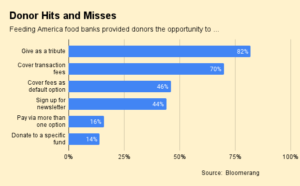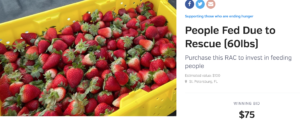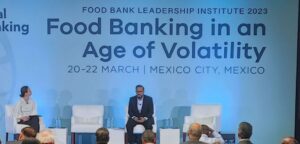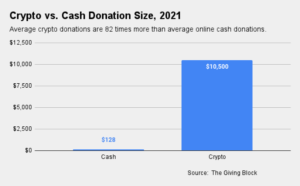‘Tis the season when food-bank donors get hit with an onslaught of emails — and possibly a dose of email fatigue.
A new idea for email campaigns, designed specifically for food banks, reverses that course by riveting the attention of supporters through a simple game. The gamified emails do the double duty of giving a food bank’s corporate donors a chance to raise their profile during the giving season.
The holiday-themed game, called Grab a Meal, Give a Meal and developed by New York-based interactive marketer Luckeyou, lets players catch meals falling from the sky to the tune of catchy seasonal music. For every meal caught, a sponsoring corporate donor contributes as many meals to the food bank.

Gaming for a cause, offered in a simple and easy way, represents a novel approach to fundraising. “Organizations are looking for that next cool thing,” said Tim Dingersen, Creative Director and Partner of Luckeyou. “This is a different and more fun way to reach people.”
Dingersen originally developed the game as a way to engage with his firm’s clients during the holidays, without having to send a gift or tchotchke that no one really wanted in the first place. About 25% of the 200 or so clients he sent it to opened the email and played the game, catching nearly 15,000 meals. Dingersen’s firm then made a corresponding donation to the food bank.
For corporate donors that would like to help their local food bank and also raise their profile in the community, Grab a Meal, Give a Meal offers an effective way to get in front of individuals. That’s because corporate logos (along with those of the food bank’s) are easily incorporated into the playing field of the game. Food banks meanwhile reap the benefit of providing a charitable platform for corporate donors, while also gaining from the funds raised.
By setting a game-related goal, food banks can turn the fatigue of an ongoing money-raising campaign into something more like a competition. In the case of Luckeyou, Dingersen sent an email every week, updating recipients on the progress of the game, including high scorers. “It gives you, as an organization, a reason to send out an email,” Dingersen said. “You could structure your whole holiday email giving campaign around the game.”
The flexibility of the database-driven game allows for many permutations. Food banks could send the gamified email, sponsored by a particular donor, to its own list of contributors. Or a business could send the game to its own clients, on behalf of the food bank. Either way, all the activity on the game is trackable.
Another way to use the game is to have a company encourage different departments of its firm engage in a friendly meal-grabbing competition. Among elementary school kids, the game can be used to raise awareness of needs in the community.
Luckeyou took care when creating the game to make it intuitively simple, as a way of increasing usage and engagement. “You just catch and give,” Dingersen said. “We’re not talking Fortnite here.”
Dingersen sees simple gamification as the next wave in interactive marketing, as individual supporters, especially younger ones, tire of traditional email marketing. “There’s no reason why this concept shouldn’t snowball,” he said.
If you’ve learned something useful to your hunger relief work today, then please donate to Food Bank News. Your donation will be doubled between now and the end of the year!









